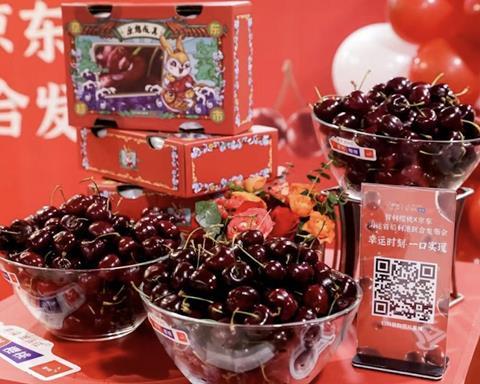Greater availability of early varieties puts pressure on market ahead of Chinese New Year

Record shipments of Chilean cherries to China are putting pressure on the market in the run up to the Chinese New Year festival.
As of the last week of December 2024, exports totalled 96mn cartons, almost double the 50mn cartons shipped in the same period of 2023. Of these, more than 88mn cartons were destined for China.
According to reports, Nansha Port in the southern city of Guangzhou witnessed the arrival of more than 1,000 containers packed with 20,000 tonnes of Chilean cherries last weekend – the largest single shipment of cherries to the port since the start of the 2024/25 season.
Chile has witnessed a staggering increase in cherry production over the past five years. At the outset of the current season, exports were projected to hit 657,935 tonnes, a rise of 59 per cent on last season.
The greater availability of early cherry varieties is thought to be one of the factors affecting prices. Santina volumes, for example, are up 125 per cent on last year. The early Chinese New Year has also led to a rush of shipments to ensure arrival before the festivities.
However, the situation is reportedly concerning producers and the National Society of Agriculture (SNA). Analysis indicates that with more than 50 per cent of Chile’s total cherry volume yet to be marketed, prices are noticeably lower than last season.
The SNA’s president, Antonio Walker, stressed the need for greater standardisation in the quality shipments to ensure that only the best quality cherries reach the market.
The president of the Federation of Fruit Producers of Chile, Fedefruta, Victor Catán, also reiterated calls to maintain high quality standards in order to maintain price levels.
“In recent days we have received news that is not very auspicious regarding the sale of cherries, with prices falling, with some fruit that has arrived with some problems in condition and packaging, which added to the greater supply, has caused prices to decrease,” he said.
“We want to have an optimistic view and we believe that in the coming days, as the Chinese New Year approaches, demand could rise and that, in turn, generate a rise in prices that could mitigate the current scenario a little.”
The situation has also reinforced calls for greater market diversification to reduce Chile’s dependence on China.
With just two weeks to go to the end of the harvest, shipments are set to decrease markedly from week 3.
The end of the Chilean season will alleviate logistical pressure in the region to the benefit of other major exporting countries such as Peru.



